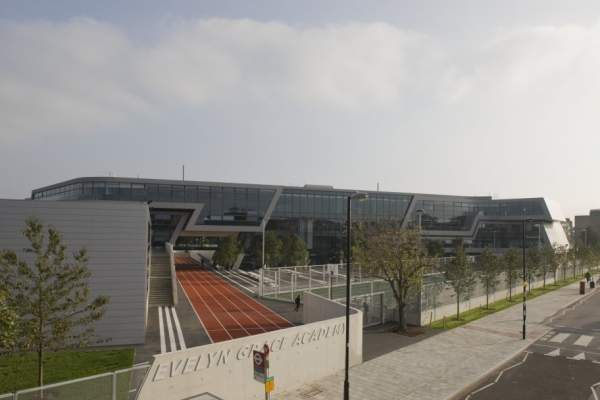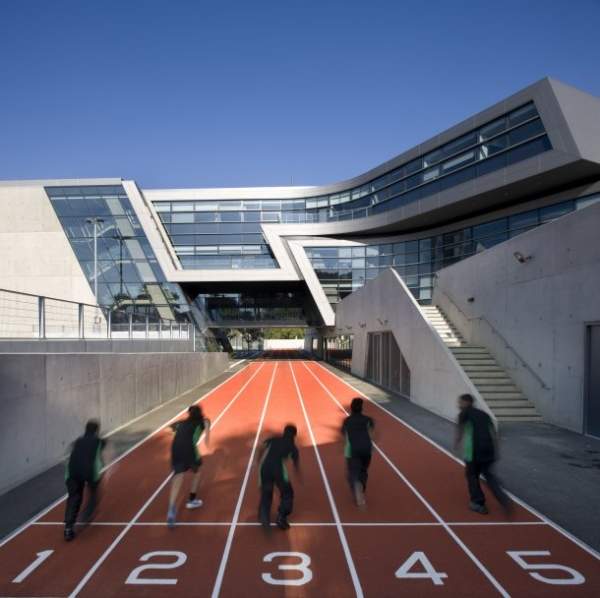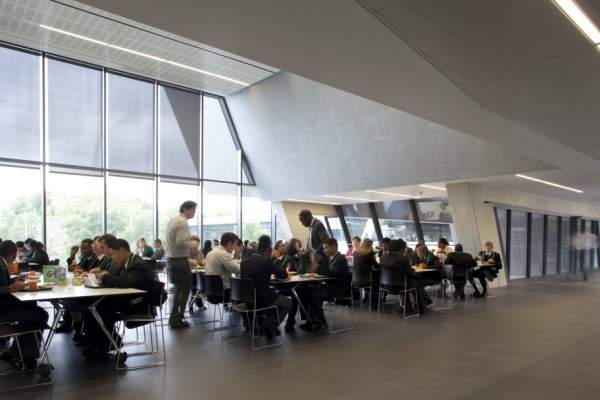The Evelyn Grace Academy is a secondary-higher school located in the historic yet active residential area of Brixton in the London Borough of Lambeth. The project is built on the principle of ‘schools-within-schools’ and houses four different schools in the same building.
It accommodates 1,200, students including 270 students each in The Evelyn Grace Middle Schools and 330 students each in the Upper Schools.
The estimated cost of the building is £48m. It was completed in 2010 nearly after two years of construction. The building was designed by architect Zaha Hadid, and is her first project in the UK.
The building design won the Royal Institute of British Architects (RIBA) Stirling Prize in October 2011. Zaha Hadid has won the prize consecutively for the second time.
The school is run by the Absolute Return for Kids (ARK) Schools, founded in 2004, to work in collaboration with the Department for Children, Schools and Families (DCSF). The school aims to create educational opportunities for children in the local community and bridge the gap between children from the disadvantaged group and the affluent group.
Design of the unique structure
The Evelyn Grace Academy building has been designed aesthetically, making utmost use of the available land. The building is Z-shaped and runs diagonally throughout the site from the southwest to the northeast, with sharp edges. It is a four-storey building with a built-up area of 10,745m2 and painted in a silver, grey and black combination.
The ground floor has three wings. The sports and fitness wing is situated in the east, while the arts and technology wing is located in the west side. The central administration wing is situated in the centre. The visitor entrance is also at the ground level.
The schools are situated in the first, second and third floors. Each of the floors has a separate entrance and exit. The design provides a distinct identity to each of these schools internally and externally. The sharing of internal and external spaces by the four schools encourages social communication and interaction among the students.
Classrooms are situated on either side along the 18m wide corridor. They are spacious and are built to provide the maximum level of natural lighting and ventilation. About 50% of the classrooms are glazed and feature contemporary architecture with durable textures.
Two double-height halls built in the centre of the corridor are used for assembly and lunch purposes. They are fully glazed on the eastern facade.
The building’s roof is used as a terrace. A 100m long running track is built in the middle of the building. It starts from the entrance and ends at the mid-point where the building bridges.
Facade of Brixton’s Evelyn Grace Academy
The facade is a combination of aluminium rainscreen and fair faced in-situ concrete.
A distinctive banding on the facade walls reflects the identity of schools and floors occupied by the schools.
Evelyn Grace Academy is built on a site which earlier housed a temporary accommodation for 180 pupils and staff members.
The temporary building was dismantled to build the new building.
Nearly about 80% to 85% of the dismantled material was recycled and reused in the construction of the project.
Contractors with a role in the project
Matthew Hardcastle was the project architect. The engineering and construction, and design and management (CDM) co-ordinator was Arup.
Mace Plus was the main contractor involved in the construction of the building. Bamber & Reddan supported Mace Plus as architects.
Quantity surveying was done by Davis Langdon. Gross Max was involved in landscaping while Sandy Brown Associates was the consultant for acoustics design.
Other contractors involved in the project were DTZ as planning consultant, EC Harris as employer’s agent and Winton Nightingale as catering consultant.






